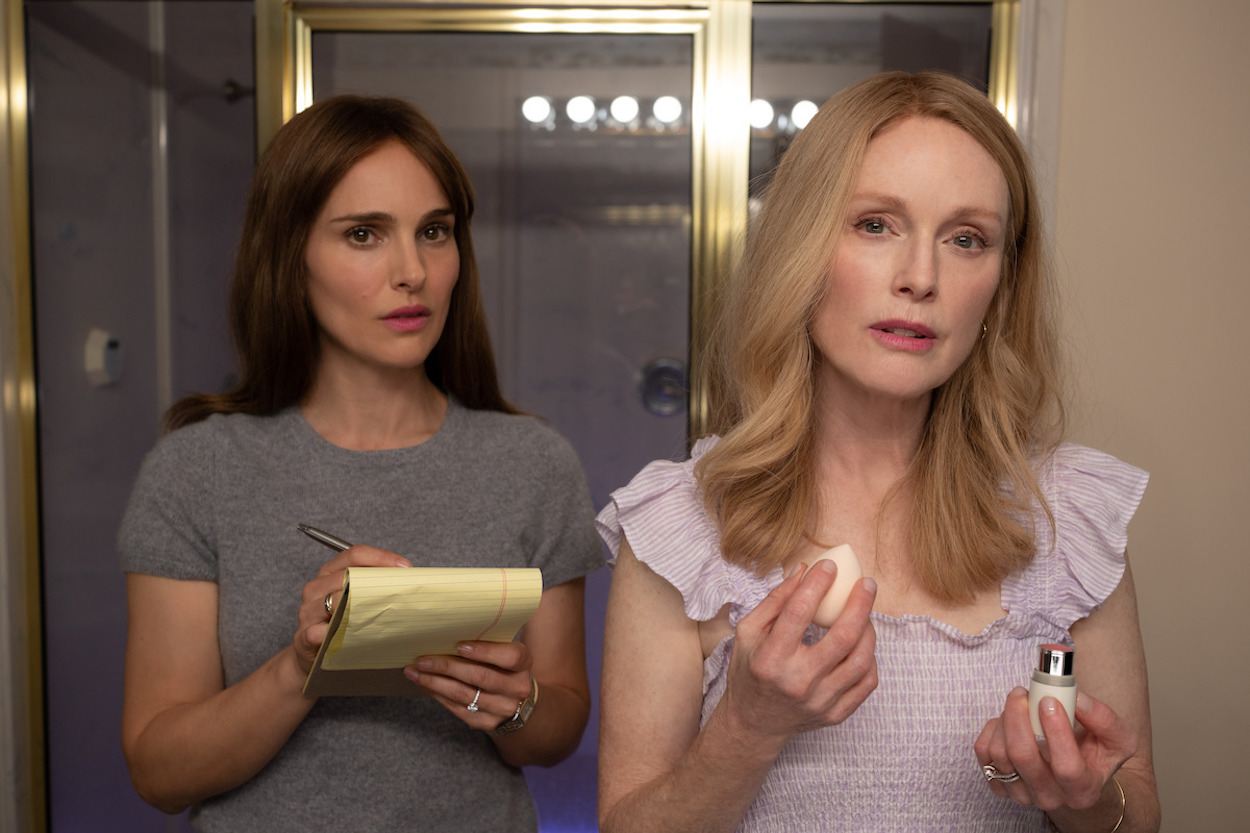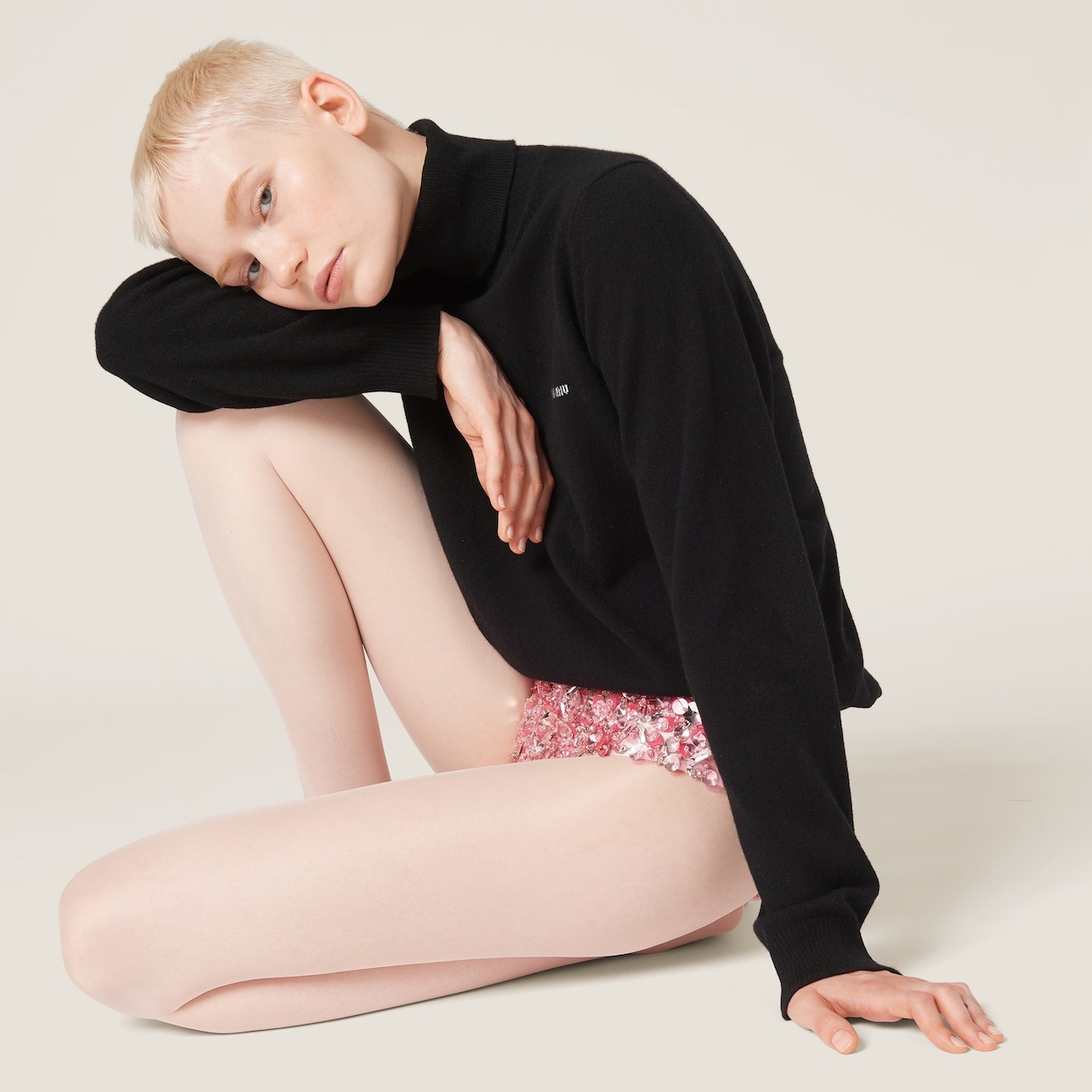The so-called “year of the girl” emerged out of nowhere this year with an ironclad grip on American culture. Much like her erstwhile cringe cousin, the girlboss, this infantilizing phenomenon has thoroughly saturated every corner of pop culture, from the compelling to the mundane. For clues as to why, look no further than Pantone’s 2024 Color of the Year, Peach Fuzz. Laurie Pressman, VP of the Pantone Color Institute, cited this past year’s “ongoing turmoil” as one of the catalysts for the almost-millennial-pink hue. “Our need for nurturing empathy and compassion has grown ever stronger.” Girl culture, for its part, elevated idealized versions of those attributes and made them attainable—for a price.
Consider the hype that propelled Hill House Home, with its viral polyester “Nap Dresses,” into a $20 million round of funding last year. They feature prominently in May December—the film’s antagonist dons them to evoke innocence and naiveté. Audrey Gelman, former girlboss incarnate, re-emerged with a country store hawking ruffled throw pillows and mugs printed with bows in Brooklyn’s grown-up Cobble Hill. A single still of Margot Robbie in a pink Corvette, deployed with strategic acumen by the brains at Warner Bros, lit the fuse for Barbie-mania, a marketing blitz spurring collaborations with Gap, Backdrop, and HGTV. A 151-page architectural survey of her Dream House was published last year and sold out immediately. Taylor Swift’s Midnights was the year’s top-selling vinyl. More recently, Miu Miu’s $5,600 crystal-embellished wool panties took Milan Fashion Week by storm.
Adults have been the ones to propel “girlishness”—a cultural phenomenon whose noun form is defined as a “female child”—into the realms of capitalist dystopia. Concert tickets, sold for the price of a used car, buoyed the Fed as fans skipped rent payments to see Swift’s Eras Tour: a three-hour-long unapologetic “acknowledgment of girls as people.” Barbie, directed by girl’s girl Greta Gerwig of Lady Bird and Little Women fame, broke 17 box office records. Girl dinner robbed us of $120 per person at restaurants that did away with hearty mains in favor of six to eight sharable small plates. (Anyone who has been victimized by this menu structure will know to add $40 for the takeout pizza ordered afterward in pursuit of actually feeling full.)
Earlier this year, novelist and Vanity Fair correspondent Delia Cai declared we had reached “Peak Girl” and summed up the paradigm’s enduring appeal most aptly: “The Young-Girl [archetype] of today relies on the romanticization of an imagined past where personal responsibility for the greater state of the world does not exist. Life, therefore, cannot be all that disappointing. We crave our girlification as a coping mechanism. Adults have to worry about rent, student loans, climate change, political demagogues, bodily autonomy; ‘girls’ don’t. At the heart of this imagined girlhood is an expression of femininity without consequence. Barbie doesn’t need birth control, anyway.”
While 30-somethings were busy dressing up for Barbie and calling themselves girlies on the archaic depths of Instagram, things got pretty bleak for actual girls. A recent feature by The Cut gave non-parents a peek into the nuance of prescribing GLP-1 agonists, a class of medications that includes semaglutide (the generic formulation of Ozempic) to kids as young as 12. In a post-Roe world, where access to gender-affirming care is also increasingly under threat, that means generations of kids will come of age with more access to boundary-breaking healthcare—with some major exceptions. It’s a dark reality that the “privilege” of buying co-branded pink paint, or frilly frocks, can never make up for.



